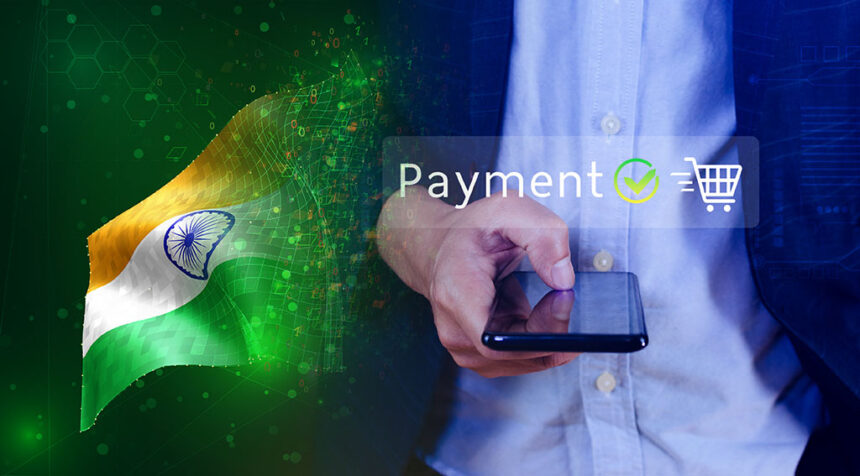India’s digital payments landscape has seen impressive growth over the past decade.
According to According to a recent report by PwC India, retail digital payments have surged 90-fold over the past 12 years, with transaction volumes expanding at a staggering 40% annually and transaction value growing 35% annually.
This impressive growth is driven by multiple factors, including the rapid expansion of digital infrastructure, widespread adoption of the United Payments Interface (UPI) and other digital payment methods, and changing consumer preferences towards digital transactions, the report said.
The momentum is set to continue in 2023-24 as the country’s real-time payments system, UPI, recorded a phenomenal growth of over 50 per cent, according to the report.
UPI is a real-time payment system developed by the National Payments Corporation of India (NPCI) that enables instant transfer of money between two bank accounts through a mobile platform. The system is widely used across India for various financial transactions such as peer-to-peer (P2P) payments, bill payments, and online shopping, accounting for 53.4% of all transactions in 2023. According to 2024 Primetime Real Time Report from ACI Worldwide.
Bharat Bill Payments Solution (BBPS), India’s centralised and interoperable bill payment system, registered a growth of 25 per cent, mainly due to the addition of new billers and increased payment options for customers through third-party application providers, while National Electronic Toll Collection (NETC), which facilitates electronic toll collection in India, expanded by over 10 per cent, driven by the continued adoption of toll tags on new vehicles.
BBPS and NETC are other initiatives by NPCI aimed at increasing convenience, improving efficiency and encouraging digital transactions in India’s financial ecosystem.
Merchant acquiring solutions, including offline and online options like QR code payments, payment aggregators, and payment gateways, also witnessed significant growth of over 25% on account of regulatory initiatives, rising QR penetration and the entry of new players. Finally, credit card usage grew by around 20% on account of increased demand from Gen Z and population in Tier II and below regions.
Predicted growth of digital payments
India’s digital payments market is projected to grow further in the coming years. PwC India expects digital transaction volume to more than triple by 2028-29, rising to 481 billion transactions from 159 billion in 2023-24. The total value of these transactions is set to double from INR 262 trillion (US$3.2 trillion) to INR 577 trillion (US$6.9 trillion) over the same period.

PwC India expects the daily volume of UPI transactions to grow from 359 million in 2023-24 to 1.4 billion by the end of 2028-29, at which point UPI transactions are expected to total INR 439 billion and the transaction value to reach INR 483 trillion (US$ 5.8 trillion).

India’s credit card market is also expected to grow significantly. The industry has seen a 100% increase in cards issued over the past five years and is expected to replicate this growth over the next five years. By FY28-29, the number of active credit cards is expected to double to 200 million, supported by a compound annual growth rate (CAGR) of 15%.

In terms of transaction volume and value, credit card usage is predicted to grow significantly: the number of transactions is expected to grow by 21% and the total transaction value by 18%, with an estimated 9 billion transactions and total spend of over INR 40 trillion (USD 476.5 billion) by 2028-29.

Emerging Trends in Digital Payments in India
The PwC India report also explores emerging trends in the digital payments landscape, focusing on new payment instruments, future opportunities for industry players and the evolving regulatory environment over the next five years.
Building on the momentum of the past decade, India’s digital payments landscape is expected to witness accelerated, sustained and robust growth. This growth will be driven by product innovation aligned with both end users and merchants, with a focus on sustainable margins, expansion into new markets and increased regulatory engagement.
Innovations in new payment methods such as UPI Lite, credit cards on UPI, virtual credit cards, rewards payments, business payments and merchant acquiring are expected to continue to drive growth, with UPI-linked credit cards in particular seeing a surge.
Moreover, the convergence of payments, insurance, wealth management and lending services will continue to transform the financial landscape, creating a comprehensive ecosystem to cater to the evolving needs of customers. Many banks, non-banking financial companies (NBFCs) and fintech companies are now offering these services through super apps, offering a range of financial and non-financial products and services under one product.
The report also focuses on the digitization of business payments in India and highlights that connected finance plays a key role in making businesses more agile. Connected finance provides a unified view of multiple financial channels and accounts, helping businesses better manage their finances, including current accounts, vendor payments, budgeting, and tracking tax returns. In India, banks are increasingly partnering with software-as-a-service (SaaS) companies to provide connected finance to small and medium enterprises (SMEs) and micro, small and medium enterprises (MSMEs), integrating their business software with their accounts to provide access to real-time financial information.
The report notes that loyalty programs are also evolving, transforming into advanced marketing platforms that leverage data analytics, artificial intelligence (AI) and customer insights. These programs are becoming more personalized and responsive to individual needs and behaviors, while also addressing the complexities of data privacy and customer trust.
Finally, the report emphasizes the importance of regulatory frameworks to foster payments innovation, noting several developments over the past year, including: release The Reserve Bank of India (RBI) has released new guidelines for cross-border payment aggregators on October 31, 2023. The guidelines will allow non-banking entities to enter the payment aggregation business and expand its scope to include import of services. This will enable Payment Aggregator Cross-Border (PA-CB) providers to operate independently without the support of Authorized Dealer (AD) banks.
RBI (Reserve Bank of India) Also planning It will introduce interoperability for internet banking transactions and is due to be rolled out later this year. The move is aimed at speeding up fund settlement for retailers and addressing delays in receiving payments. Currently, banks have to integrate separately with each payment aggregator used by different online retailers, a complex and cumbersome process given the large number of aggregators in the market.
Featured Image Credit: Free Pick







